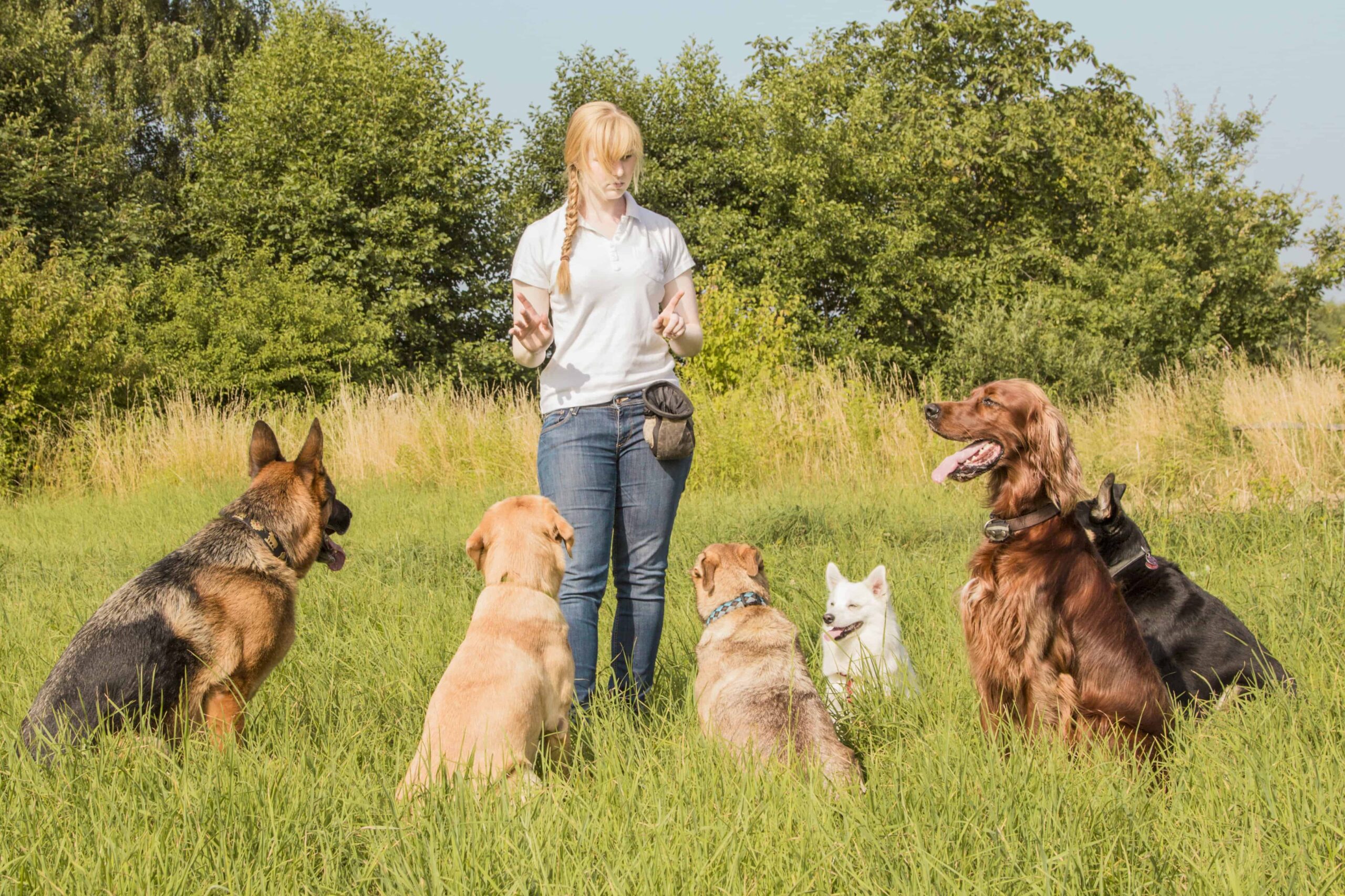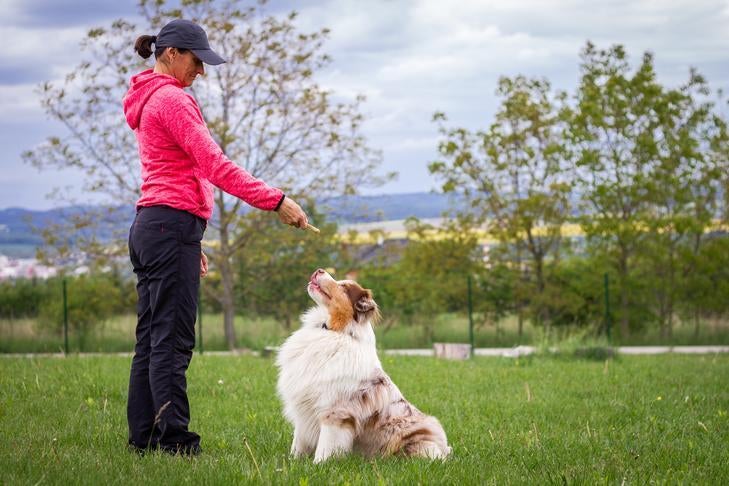Vital Tips for Successful Dog Training: An Overview for Family Pet Owners
Efficient pet dog training is a complex procedure that requires a calculated strategy customized to both the family pet's temperament and the proprietor's objectives. Key parts such as establishing constant commands, utilizing favorable support, and promoting very early socializing play crucial functions in promoting a well-adjusted canine companion. Numerous pet dog owners experience challenges that can hinder progress, leading to stress and uncertainty. Comprehending exactly how to navigate these challenges can dramatically enhance the training experience, ultimately changing the connection between owner and pet dog. What are the crucial approaches that can be used to make sure success in this undertaking?
Understanding Canine Actions
Comprehending pet habits is necessary for effective training and promoting an unified partnership in between canines and their owners. dog training. Pet dogs connect largely with body language, vocalizations, and actions, making it critical for proprietors to interpret these signals accurately.

Socialization plays a substantial function in canine habits; exposure to different settings, individuals, and other animals can considerably affect a pet's temperament. Elements such as type features and individual personality need to lead training techniques, as some breeds might have particular behavioral traits that demand tailored methods. By understanding these elements, owners can develop a helpful environment that motivates favorable behavior, bring about successful training end results and a much deeper bond with their animals.
Establishing Regular Commands
Efficient communication with your canine starts with establishing consistent commands. This foundational aspect of training is important for fostering understanding in between you and your pet. Consistency in the commands you use makes certain that your pet dog can accurately connect particular words or phrases with the wanted behaviors.
When choosing commands, choose clear, unique words that are easy to set apart and say from each other. Prevent using similar-sounding commands that might perplex your dog. Using "sit" and "remain" is proper, but "rest" and "struck" could lead to misunderstandings.
Furthermore, preserve the same tone and volume for every command. Pets are sensitive to vocal signs, so varying your tone can produce complication.
It is similarly important to ensure that all relative get on the very same web page relating to the commands utilized. A united front in command usage will certainly stop mixed signals and strengthen the knowing process.
Positive Support Strategies
The power of positive support in pet dog training exists in its capability to encourage wanted habits with benefits and praise. This strategy is based in the principle that actions followed by favorable end results are a lot more likely to be duplicated. By including favorable reinforcement right into your training program, you can effectively form your pet's habits in a constructive fashion.
To execute favorable reinforcement, it's vital to identify what encourages your canine, whether it be deals with, toys, or verbal appreciation. When your canine executes a preferred activity, such as resting on command, promptly reward them with a reward or love. This association in between the command and the favorable end result enhances their understanding.
It's crucial to timing the benefits correctly; delivering the support within seconds of the preferred actions helps your pet dog make the link (dog training). Furthermore, uniformity is key-- make sure that all member of the family utilize the very same commands and reward systems to prevent complication

Slowly, you can lower the regularity of deals with as your pet learns the behavior, transitioning to applaud or periodic incentives. This method not just cultivates a strong bond in between you and your dog however additionally advertises a positive knowing setting, making educating an enjoyable experience for both.
Socialization and Interaction
Continually revealing your dog to a range of settings, individuals, and various other pets is essential for their social advancement. Socialization must begin early, preferably during the important window of 3 to 14 weeks, when pups are most responsive to brand-new experiences. Older dogs can additionally profit from recurring socializing efforts.
Present your dog to various settings, such as parks, pet-friendly stores, and metropolitan areas. This direct exposure assists them adapt to numerous stimulations, decreasing stress and anxiety and worry reactions. Urge positive interactions with various other pet dogs and people, making certain that these encounters are regulated and safe to cultivate confidence.
Utilize structured playdates with genteel canines, as this can enhance your pet's social skills and teach them suitable actions. Obedience classes and training sessions additionally offer outstanding possibilities for socializing, permitting your dog to read this post here engage with others in a monitored atmosphere.
Monitor your pet's body movement during interactions, as this will certainly help you evaluate their comfort degree. Progressively raise direct exposure to even more difficult scenarios while guaranteeing that each experience declares. A well-socialized canine is more likely to show balanced habits, making them a pleasure to have in any setting.
Attending To Typical Training Difficulties
Every pet owner will experience training obstacles eventually, regardless of their pet's age or socializing level. Determining typical concerns such as stubbornness, distractions, and fearfulness can assist in creating reliable approaches for enhancement.

Progressively introduce interruptions helpful hints as the canine becomes much more proficient in commands. Short, constant training sessions are additionally effective in keeping interest.
Fearfulness can hinder a pet's discovering process. Steady desensitization to the resource of worry, coupled with positive support, can assist minimize anxiety. Perseverance is essential; never ever force a pet right into a circumstance that triggers distress, as this might worsen the issue.
Ultimately, understanding and addressing these common difficulties with a structured strategy will certainly foster a more effective training experience, enhancing the bond between pet and owner while promoting effective knowing.
Verdict
In recap, effective dog training counts on an extensive understanding of canine behavior, the establishment of consistent commands, and the application of positive support techniques. Socializing plays a vital function in developing well-adjusted family pets, while dealing with common training challenges needs persistence and adaptability. By implementing these important approaches, animal proprietors can promote a solid bond with their dogs and advertise preferable behaviors, eventually leading to a harmonious partnership between people and their canine buddies.
Comprehending pet dog habits is crucial for effective training and cultivating an unified connection between dogs and their proprietors.Socialization plays a considerable function in pet behavior; direct exposure to different settings, individuals, and other pets can considerably affect a pet's character.The power of favorable reinforcement in dog training exists in its capacity to urge preferred habits with incentives and praise. By integrating favorable reinforcement right into your training routine, you can successfully form your pet dog's habits in a useful manner.
In recap, successful pet training relies on a detailed understanding of canine actions, the facility of regular visit homepage commands, and the application of favorable reinforcement methods.